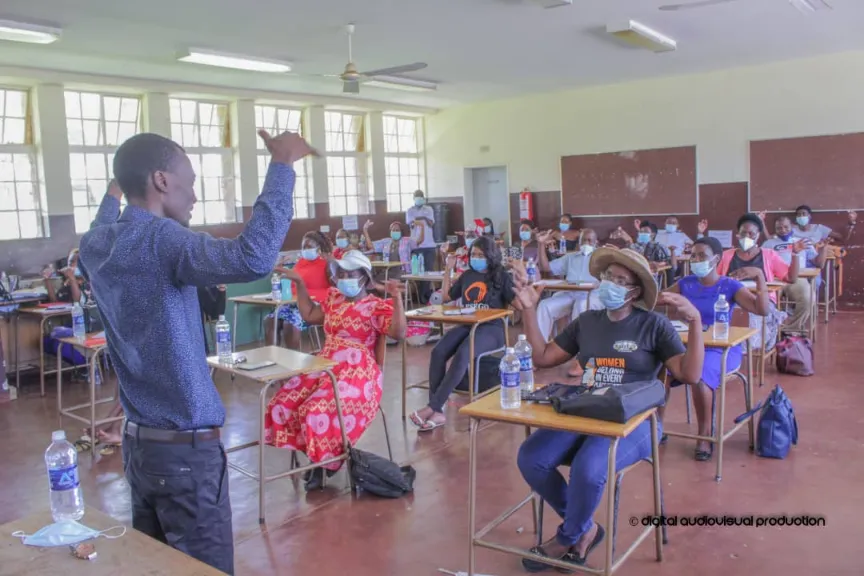Sign language in Zimbabwe is an important means of communication, especially for deaf people. However, in Zimbabwe, sign language faces many challenges, from cognitive limitations to lack of resources.
This article takes a look at the history and current status of Sign Language in Zimbabwe, highlighting its importance and the efforts being made to maintain and promote it.
What is Sign Language
Sign language is a form of visual communication that uses hand gestures, facial expressions, and body language to convey meaning.
It is an essential tool for deaf and hard of hearing people to communicate effectively with others and enable them to participate fully in society.
Sign language is widely used in many countries, but Zimbabwe faces many challenges that threaten its continued use and growth.
History of Sign Language in Zimbabwe
Sign language has played a crucial role in the lives of Zimbabwe’s deaf community for many generations. With roots tracing back to colonial times, sign language in Zimbabwe has evolved and grown to become an essential part of the country’s cultural fabric.
The Early Days of Sign Language in Zimbabwe
The history of sign language in Zimbabwe dates back to colonial times, when deaf students were first introduced to this mode of communication through the efforts of missionaries. These early pioneers of sign language taught the deaf students how to communicate using gestures and hand signals, which laid the foundation for the development of sign language in the country.
Importance of Sign Language in Zimbabwe
Sign language is an important means of communication that enables deaf and hard of hearing people to express themselves effectively and participate fully in society.
In Zimbabwe, sign language is also an important part of the country’s cultural heritage and represents the unique experiences and perspectives of the deaf community.
Additionally, sign language plays an important role in the education of the deaf and hard of hearing. It promotes intellectual and personal growth by enabling you to understand and express your thoughts and ideas.
Without access to sign language, deaf people in Zimbabwe face significant barriers to education and employment, limiting their ability to succeed and thrive.
Current Issues and Efforts for Spreading Sign Language
Despite its importance, Zimbabwean sign language faces many challenges that threaten its continued use and growth.
These include limited awareness and support, lack of resources for deaf people to learn and use sign language, and lack of qualified sign language interpreters.
However, efforts are being made in Zimbabwe to promote and maintain sign language. NGOs, advocacy groups and the government are working to raise awareness of the importance of sign language and the challenges it poses.
The University of Zimbabwe (UZ) has made a significant impact in promoting inclusion through its curriculum education 5.0. By mandating the study of foreign and local languages which includes ZImbabwean Sign Language (ZSL).
The university is providing its students with the necessary tools to communicate effectively and build bridges of understanding between different cultures and communities.
At ALASO Academy we also provide resources and training for the deaf and sign language interpreters to help sign language continue to thrive in Zimbabwe.
Conclusion
Sign language is an important means of communication and an integral part of Zimbabwe’s cultural heritage.
Despite facing many challenges, from limited awareness to lack of resources, efforts are being made in Zimbabwe to promote and protect sign language.
Understanding their importance and supporting these efforts will ensure that deaf and hard of hearing people have the tools they need to communicate effectively and participate fully in society. increase.

